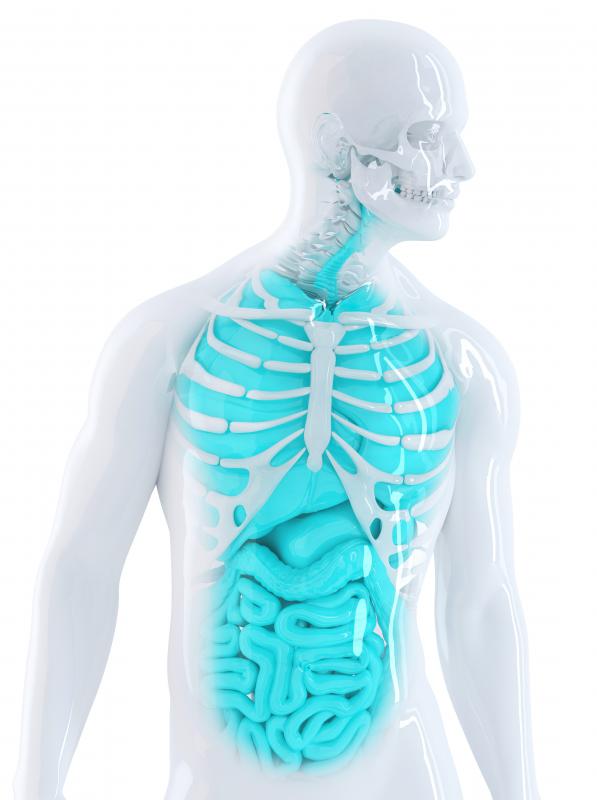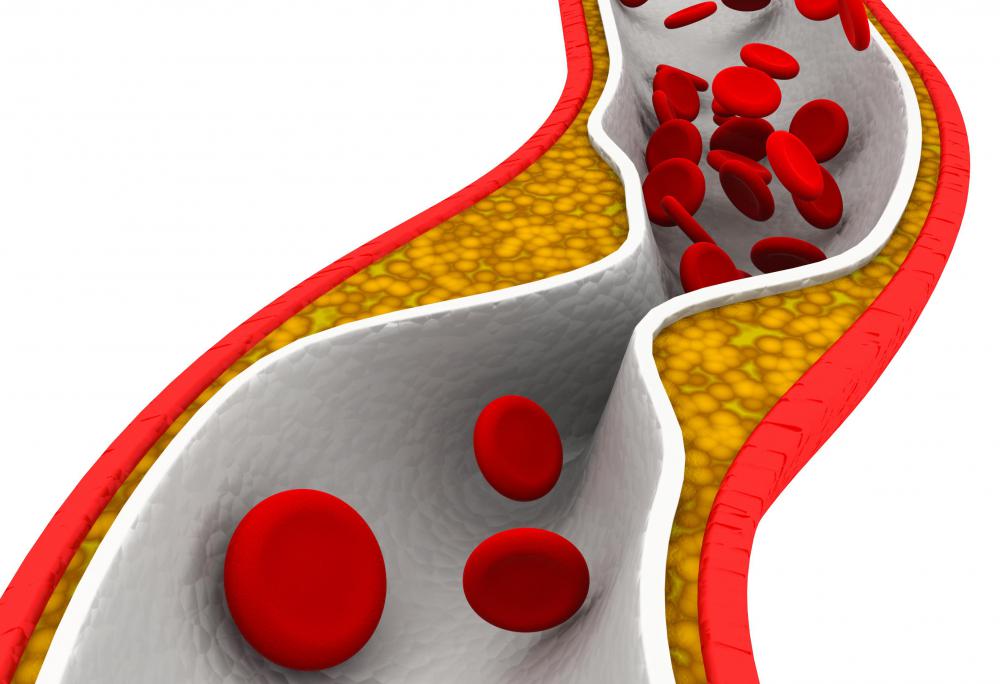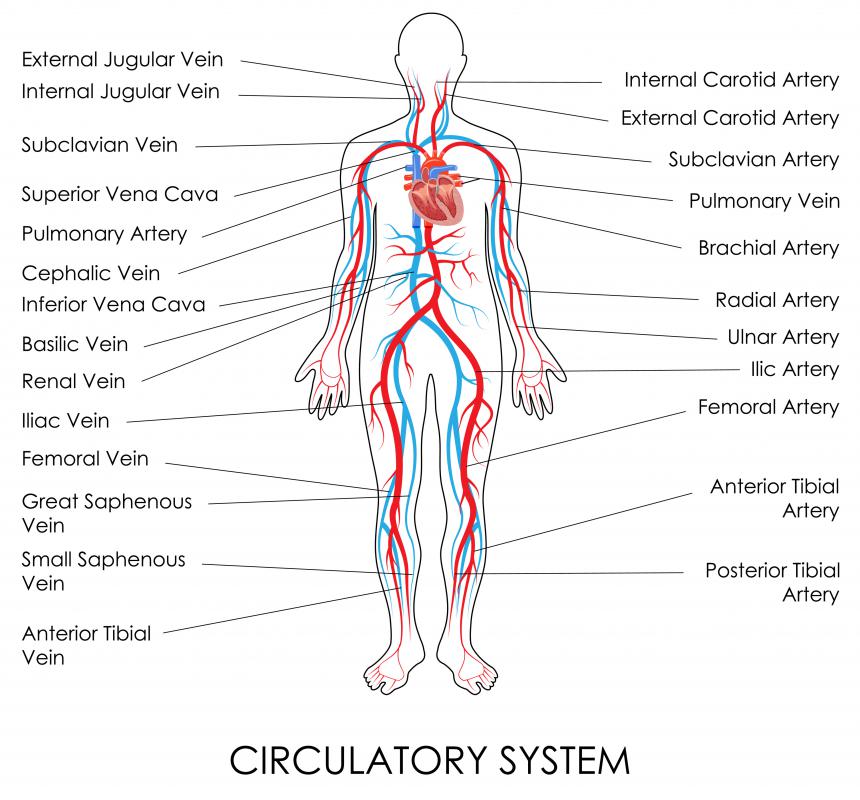At TheHealthBoard, we're committed to delivering accurate, trustworthy information. Our expert-authored content is rigorously fact-checked and sourced from credible authorities. Discover how we uphold the highest standards in providing you with reliable knowledge.
What is the Superior Mesenteric Artery?
The superior mesenteric artery (SMA) is a large blood vessel that supplies oxygen and nutrients to the lower digestive tract of the human abdomen. The term "mesentery" refers to a double-layered membrane called the peritonium, which encases the small and large intestines. The outer layer anchors the organs to the abdominal cavity; the inner layer allows the organs relative freedom of movement. In between the two layers are blood vessels, lymph vessels and nerves. The blood vessels originate from the SMA.
With a contraction of the heart, blood is pushed out through the aorta, which U-turns downward to become the abdominal aorta that feeds the human torso. Several major blood vessels branch from it, and just 0.4 inches (1 cm) below the celiac trunk, which services the stomach, liver and spleen, is the junction of the superior mesenteric artery. Alongside it is the superior mesenteric vein, heading back to the heart with carbon dioxide and other byproducts of metabolism. The SMA is a major artery; it is neither paired or split into separate arteries.

The superior mesenteric artery does, however, further branch. An inferior pancreaticoduodenal artery supplies blood to the pancreas and most of the duodenum, which connects the stomach to the small intestine. Intestinal arteries — jejunal and ileal — branch and spread throughout the convoluted coils of the small intestine. Three colic arteries blanket most of the colon, or large intestine. Lastly, an ileocolic artery, the final terminal branch of the superior mesenteric artery, covers whatever remains, including the appendix.

The SMA begins to branch, just after passing under the neck of the pancreas. This area is congested with other organ structures, including the splenic vein from the spleen, the renal vein from the left kidney and the lower end of the tubular duodenum. Although very rare, physiological problems can develop when the large blood vessel compresses and obstructs these adjacent structures. A condition called Nutcracker syndrome can result from the impacted flow of venal blood from the kidney. Superior mesenteric artery syndrome, which is potentially fatal, depending on the degree of obstruction, arises when the digestive tract is disrupted by a compressed duodenum.

As a rule, large major blood vessels of the human circulatory system are less prone to vascular diseases, believed in part because of hemodynamics, such as the volume and velocity of fluid flow. The SMA thus rarely develops atherosclerosis from cholesterol plaque. Conversely, however, disease and trauma of major blood vessels are often catastrophic. Occlusion or obstruction of the SMA, such as a blood clot, causes a condition called intestinal ischemia that is fatal in 80 percent of cases.
AS FEATURED ON:
AS FEATURED ON:

















Discuss this Article
Post your comments